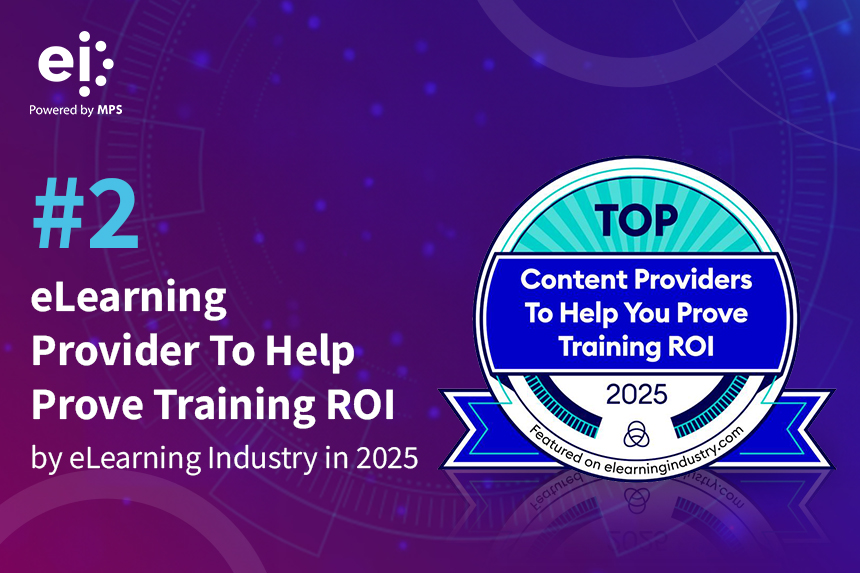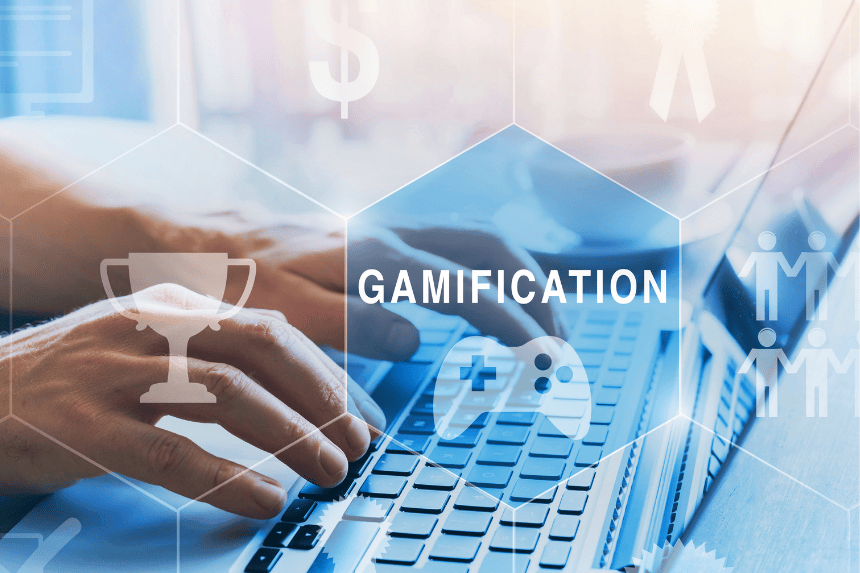
Learning and Development (L&D) plays a vital role in strategically scaling up training and development. This article shows how L&D scales global training delivery for a global workforce, addressing challenges, fostering inclusivity, and promoting a learning culture.
Distributed Workforce and Learning
A distributed global workforce has impacted learning methods, tools, strategies, and overall global performance outcomes across organizations. L&D has responded by using digital platforms to deliver personalized learning to a globally distributed workforce and empowering them to adapt to the challenges of remote work.
L&D is using tech-driven global training delivery to make learning paths more adaptable for remote employees’ schedules and using data-driven insights to improve learning effectiveness. However, a distributed workforce poses several challenges for L&D. One of the key challenges is to maintain engagement and connection with remote workers.
Scaling Learning and Performance
Scaling Learning and Performance within an organization is a strategic endeavor. Based on their unique needs, the L&D function in an organization must carefully design a global learning strategy that allows them to derive maximum benefits from their scaling efforts. Some considerations while scaling L&D are as described below:
When to Scale:
Moments of transformation, such as operational expansion or entering new markets, are ideal for reinforcing consistent global training delivery that aligns with evolving business structures. Scaling L&D is also critical during major technology implementations, to help the global workforce adapt to tools and systems effectively. Global training delivery is also useful when trying to identify and bridge skill gaps through reskilling and upskilling for future readiness.
Benefits:
Scaling initiatives offer several benefits such as ensuring a consistent and standardized approach to learning across the organization. It enables uniform skill development, equal opportunities, and inclusivity at scale. A strong global training delivery framework ensures training consistency across all regions.
As business needs evolve, scaling allows for swift adaptation to new skill requirements by equipping the global workforce with relevant skills. It not only facilitates quicker onboarding of new hires but also helps identify future leaders and prepare them for leadership roles. Using data-driven insights, global training delivery helps organizations improve development and employee retention rates.
L&D Alignment with Organizational Goals
For L&D to deliver measurable business value, it must operate as a strategic partner, not just a service provider. This begins with a deep understanding of the organization’s mission and goals. Strong alignment also ensures that global training delivery reinforces corporate objectives.
L&D teams should collaborate with leadership to co-define success metrics and identify gaps in performance or readiness. Whether it’s enabling digital transformation, supporting DEI initiatives, or accelerating innovation, learning must directly impact business KPIs. Regular reviews ensure learning remains relevant as priorities evolve.
Leadership and Stakeholder Buy-in:
The collaborative efforts of leadership and stakeholders can create a powerful synergy to drive the successful scaling of learning and performance initiatives for a distributed workforce. Their buy-in is essential to ensure proper resource allocation and effective global training delivery at scale.
Leadership support ensures alignment with business strategy, adequate resource allocation, and visibility. Stakeholders contribute valuable insights into skill gaps and champion adoption at the team level. Together, their involvement is crucial for scaling success.
Strategic Role of L&D in Talent Development
L&D plays a critical role in:
- Building future-ready skills aligned with business needs
- Developing leadership pipelines for succession
- Shaping culture by reinforcing values and inclusivity
- Enabling performance through targeted interventions
- Enhancing employee experience via personalized learning
This strategic role ensures that global training delivery supports both individual growth and enterprise transformation.
Continuous Learning:
Scaling global training and development can help expand the strategy of continuous learning within an organization. Personalized learning journeys, delivered through efficient global training delivery methods, equip teams with skills at the right time. This can be achieved by curating relevant content, offering Microlearning, and choosing learner-friendly platforms.
Measuring L&D Effectiveness
To scale effectively, L&D must be data-driven. Key metrics include:
- Engagement: Course completions, participation rates, learner feedback
- Retention: Assessment scores, quizzes, simulations
- Behavior change: Post-training application, manager observations
- Business impact: Productivity increases, cost savings, or improved revenue
AI dashboards and tools like xAPI allow for seamless tracking of global training delivery outcomes.
Centralized Knowledge Repository:
A centralized knowledge hub supports consistent content, better collaboration, and effective global training delivery. It simplifies content updates and provides analytics on learner behavior, preferences, and completion rates.
Prioritize:
Organizations must prioritize scaling efforts considering the unique needs and challenges of remote employees. It is recommended that organizations make the desired changes in phases, and not all at once.
They can conduct pilots for training to create L&D supporters throughout the organization and use the insights to update the scaling strategy. It is also important that the leadership team and stakeholders are educated and regularly informed of the scaling plan to ensure alignment.
What is Global Training and Development?
Global training and development refers to the design and delivery of learning programs that are scalable across countries, cultures, and time zones. These programs ensure a consistent standard of quality and effectiveness while adapting to local needs. They typically account for:
- Cultural intelligence: Respecting regional customs and work styles
- Language localization: Translating content into native languages with appropriate tone and nuance
- Legal compliance: Aligning with data privacy, labor laws, and IP regulations
- Platform scalability: Supporting seamless access and user experience across regions
- Governance and quality control: Maintaining consistency while allowing localized flexibility
When implemented thoughtfully, global training creates inclusive and effective learning experiences that resonate with learners worldwide and support consistent business outcomes.
Managing a Global Workforce Effectively
Effectively managing a global workforce through L&D requires a careful balance between maintaining consistency and allowing for localization. Standardizing foundational training helps ensure coherence across the organization, but learning experiences should be adapted to reflect local cultures, languages, and business realities. Localizing content makes it more relevant and engaging, while partnering with regional subject matter experts and learning champions ensures programs are aligned with specific market needs.
Flexible delivery formats, such as mobile-friendly and asynchronous learning, provide accessibility for employees across different time zones. It is also important to consider regional holidays, work patterns, and learner preferences when planning global training delivery schedules. The goal is not to offer the same learning experience everywhere, but to create equitable access and support meaningful learning outcomes for all employees, regardless of where they are located.
Aligning for Company Growth
To respond to the growth of the company, align the learning initiatives with the evolving needs and goals of the organization. Use a learning strategy to respond to company growth in the following ways:
Enhance Learning Strategy:
Begin by examining the current learning strategy and identifying the critical skills needed for growth, new roles, and functions. Use various formats such as e-learning and virtual sessions, adopt technology-driven tools like LMS, customize learning paths, seek feedback, and regularly review the strategy.
Leverage eLearning:
Consider tailoring eLearning modules to individual roles, skills, and learning preferences. Use microlearning modules and develop interactive content with multimedia elements, quizzes, simulations, and scenarios to improve engagement and retention. Gamified content is especially effective when integrated into global training delivery strategies, as it increases motivation across diverse learner groups. And finally, use surveys to gather feedback on eLearning effectiveness to refine the strategy over time.
Adopt Innovation:
Integrate innovative technologies such as Augmented Reality (AR), Virtual Reality (VR), Mixed Reality (MR), and artificial intelligence (AI) for immersive and interactive learning and to create simulations for skill-based training. Use AI to personalize learning paths, recommend training based on individual strengths or learning pace, and answer learners’ queries using NLP (Natural Language Processing) chatbots. Leverage AI analytics to track learning progress and identify areas for improvement. Use AI-powered tools to generate and update learning content.
Cross Cultural Training:
Consider initiating/improving cross cultural training to create a more respectful, inclusive, and harmonious distributed workforce. It also helps develop a global mindset among employees and encourages diverse thinking.
Implementing Global Training Delivery Strategies
To successfully implement global training delivery strategies, organizations must take a tactical and regionally sensitive approach. The following practical tips can help ensure successful execution:
- Adapt content to local norms: Customize examples, imagery, and references to reflect regional contexts
- Use multilingual delivery: Work with native speakers or professional translators to ensure clear, culturally appropriate communication
- Coordinate scheduling across time zones: Use asynchronous formats and recorded sessions to improve access and participation
- Partner with regional SMEs and trainers: Leverage local expertise to ensure relevance and engagement
- Ensure regulatory compliance: Stay updated on regional laws affecting training content, data privacy, and accessibility
- Use global analytics tools: Monitor engagement, performance, and feedback across locations with scalable measurement systems to continually refine global training delivery.
- Empower local champions: Identify influential team members in each region to drive adoption and gather feedback
Tips for Scaling Global Learning and Development
Realizing the potential benefits of scaling global learning, more organizations are motivated to create a global learning culture to ensure a competitive advantage in workforce enablement. Conversely, most organizations do not know where to begin. Here are some insights that can help:
- Improve retention: Focus on improving cognitive retention for a larger audience. To achieve this goal, consider using Microlearning, which offers bite-sized modules that make it easier for employees to retain and apply the skills in practical situations.
- Adaptive modules: Use adaptive modules to deliver a range of tech-driven modules such as single-page lessons, full-length training, and chatbot-driven interactive learning sessions to cater to the diverse learning needs of a distributed workforce.
- Adaptive training: A step towards smart learning, adaptive training recommends personalized content to learners based on the assessment of the knowledge gained from adaptive modules. This enables the quick delivery of personalized content to a larger group of learners, regardless of their geographical location.
- Leverage technology: Use technology to automate processes that do not need human expertise as well as to create content, conduct feedback, and analyze the results. This automation speeds up the processes and alleviates the burden on L&D.
- Enhance measurement: Data analytics can be a useful tool to enhance measurement and use the insights to improve global training delivery efficiency at scale.
- Increase communication: Maintain regular communication with globally distributed learners, leadership team and stakeholders to ensure that scaling efforts are in-line with the defined goals and meet learner expectations.
- Validate: Partner with an expert learning and performance service provider, such as EI, to validate the enhanced L&D strategy. With bespoke solutions, external experts can help design effective L&D strategies, develop relevant content, recommend suitable technologies, and provide measurement insights to assess the impact of the enhanced strategy on employee performance on a global scale.
Scaling Global Learning and Development for Success
In the pursuit of organizational success and strengthening global training delivery capabilities, it is imperative for companies to adopt a comprehensive strategy. This strategy encompasses several key elements, including the evaluation of training needs aligned with overarching business objectives, the formulation of transformation plans, the implementation of a robust Change Management approach, the utilization of technology-driven solutions to deliver adaptable and personalized learning experiences, and the cultivation of leadership support and stakeholder buy-in.
Scaling for success is not a one-time endeavor; rather, it is a continuous process that necessitates regular review and adaptation. This entails a quarterly assessment and the incorporation of innovative methodologies to ensure that the organization consistently achieves its objectives. This article highlights the importance of scaling global training delivery for a distributed workforce. By recognizing it as a strategic imperative, organizations can anticipate improved employee performance, heightened engagement, and enhanced retention rates.
Frequently Asked Questions (FAQs)
- How do you measure the effectiveness of global L&D programs?
Effectiveness can be measured through a mix of engagement metrics (completion rates, feedback), behavioral outcomes (on-the-job application), performance impact (productivity, KPIs), and business results (ROI, retention). Tools like xAPI and AI analytics can support global-scale tracking.
- How can L&D manage a culturally diverse workforce effectively?
By localizing content, respecting cultural norms, using multilingual formats, collaborating with regional SMEs, and tailoring delivery methods to local preferences. Inclusivity and relevance are key to engagement.
- What does global training and development entail?
It refers to creating and delivering learning programs that are scalable across countries, culturally adaptable, accessible across time zones, compliant with local regulations, and consistent in quality.
- How can organizations ensure consistent training quality across regions?
Establish a centralized content strategy supported by global standards and governance. Use a robust LMS with localization features, maintain a shared knowledge base, conduct region-specific QA, and involve local champions for feedback and support.
- What are the five strategic areas L&D supports in talent development?
L&D plays a critical strategic role in talent development by building future-ready skills, developing leadership pipelines, reinforcing organizational culture and values, enabling performance improvement through targeted interventions, and enhancing the overall employee experience with personalized and meaningful learning journeys.



